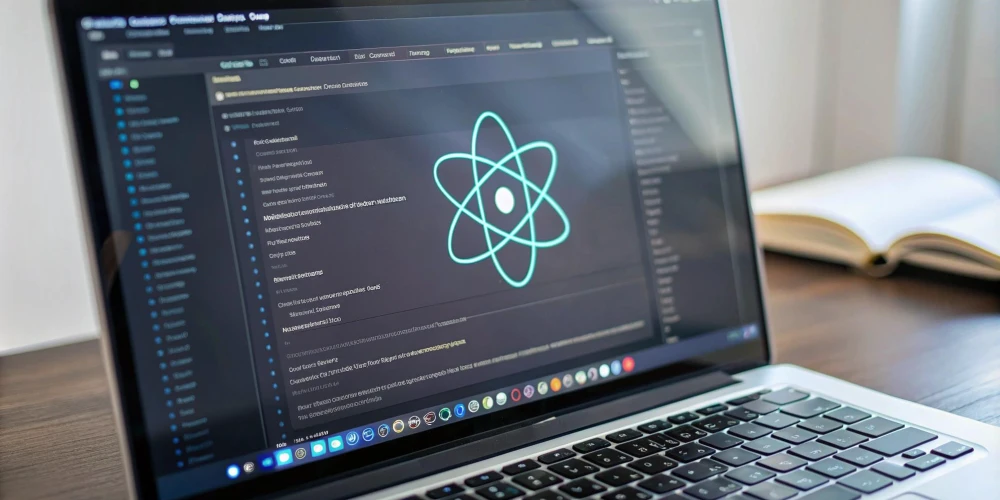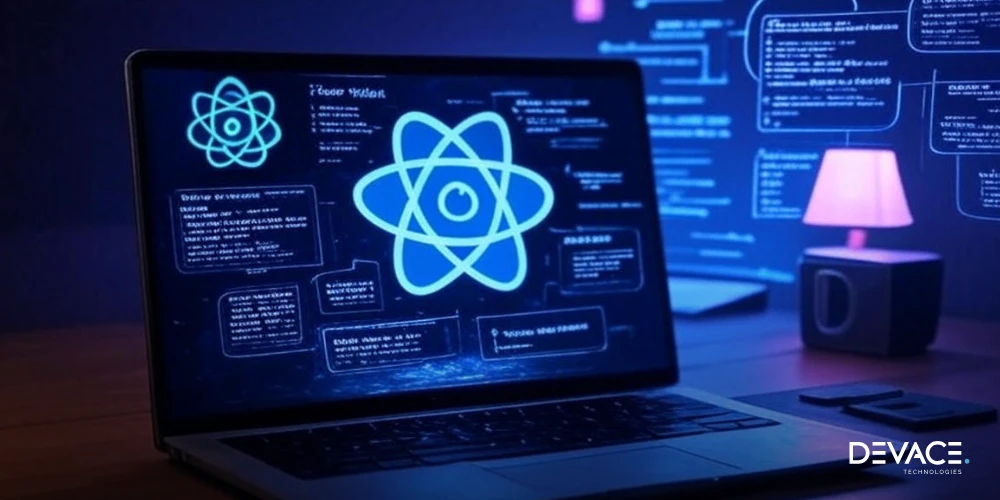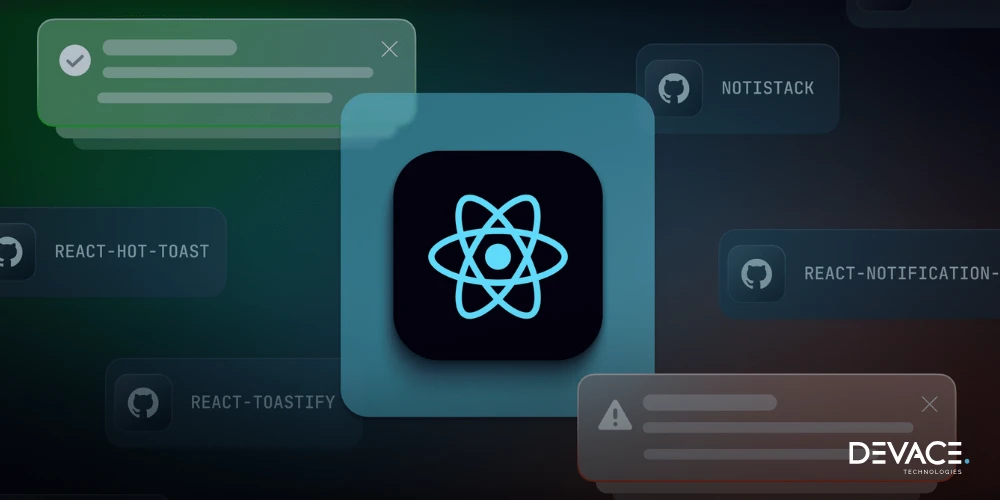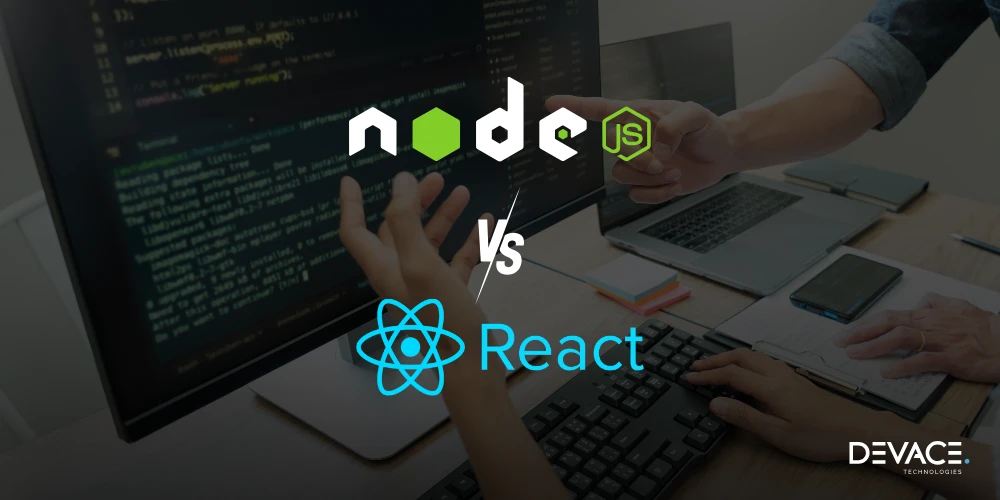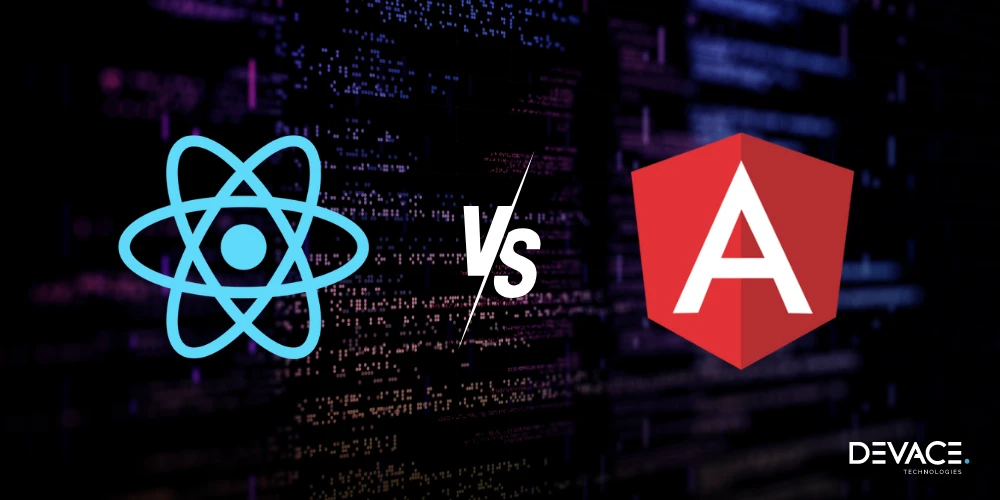React is one of the top libraries that create dynamic and interactive user interfaces that deliver seamless UX. It is a free and open-source JavaScript library that is used by front-end developers for creating visually stunning components of a website or an app.
Developers need additional tools, features, and functionalities in React, so they have to use top React frameworks to help them complete their tasks.
In today’s blog, we discuss the 25 best React frameworks that you can use for creating modern websites and applications. Get started!
25 Best React Frameworks For Development
The list is quite long but some of the names to mention include Next.js, Gatsby, Redux, Rebass, and many others. Read them out!
1. Next.js

One of the top React frameworks is Next.js which is highly recommended for server-side rendering and static site generation. If you need a framework that can provide unique and out-of-the-box solutions for routing, then Next.js is the top framework. Moreover, this framework is highly useful for API integration and top-notch performance which makes it an ideal choice for building web applications on modern standards.
Its top features include automatic code splitting, dynamic routing, and image optimization and therefore React developers highly recommend using this framework to enhance user experience and SEO. It has in-built support for TypeScript and deployment-ready features which simplifies the development of scalable and high-performance applications.
2. Redux
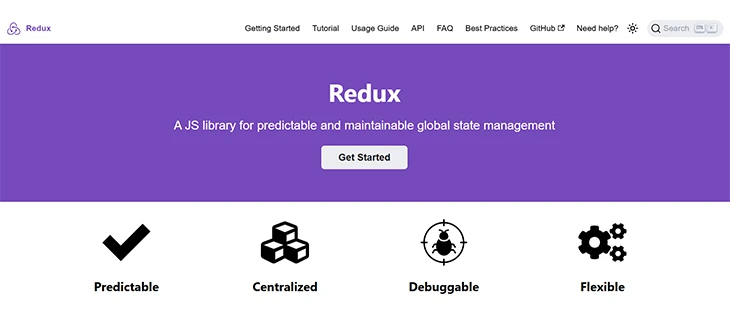
Redux is a state management library that works seamlessly with React and is a perfect solution for JavaScript apps. It has a distinguishing feature i.e., it also works extremely well with other React-like frameworks.
It is one of the best frameworks for working on large-scale projects in which multiple components are needed to share data. Redux ensures predictability by maintaining a single source of truth, making debugging and testing straightforward. As mentioned above, it is compatible with middleware like Redux Thunk or Redux Saga which enables smooth management of asynchronous operations.
Redux is a top choice for developers to maintain clean, organized code, especially in applications with complex state interactions.
3. Rebass
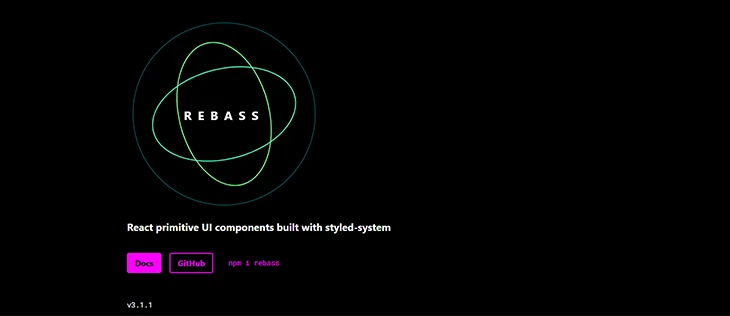
Rebass is a lightweight React UI framework that provides customization and flexibility to the developers. It puts great focus on the styled components and provides a huge collection of responsive and themable UI primitives; Radix Primitives is an open-source UI component library for building high-quality, accessible design systems and web apps.
By using Rebass, developers can quickly create web app designs that are visually consistent and accessible. Not only this, but developers also have full control over styling. Its compatibility with various design tools ensures a seamless workflow for developers and designers alike.
4. React Admin
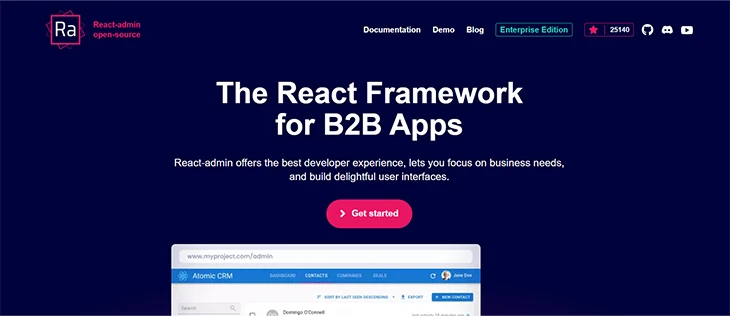
React Admin is a powerful framework that is known for building admin dashboards and back-office applications (of course, as the name suggests). This framework is built on React and Material UI that provides a compressive set of templates and components that are required to manage CRUD operations and handle data. REST APIs, GraphQL, and custom data providers allow developers to quickly set up admin interfaces.
With features like authentication, role-based access control, and customizable themes, React Admin significantly reduces the time and effort required to develop robust admin panels.
5. Ant Design
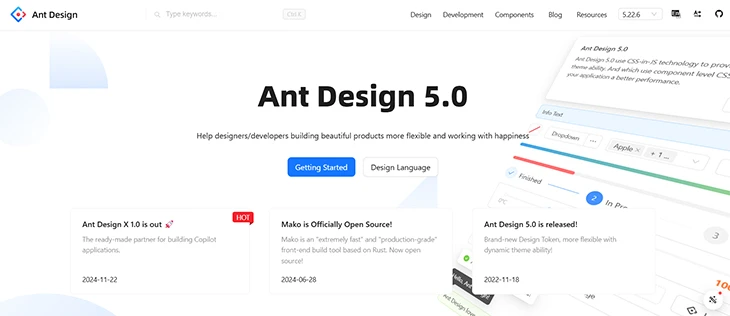
It is another React-based UI framework that comes as a top choice for developers and designers. Ant Design provides enterprise-grade components to build next-level sophisticated user interfaces to deliver unmatched experiences. It has a rich library of pre-styled components that simplify the application development process with an intuitive, professional, and polished appearance.
In addition to that, the frameworks also have a robust design language that gives visual consistency across the applications. Ant Design’s notable features include detailed documentation, dark mode, and built-in support for internationalization which makes it a preferred choice for enterprise projects.
6. Material UI
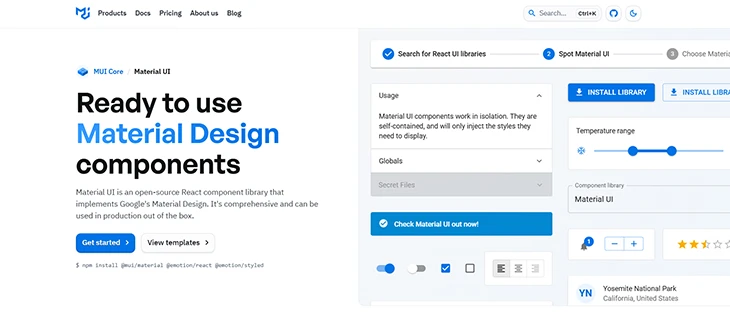
Material UI (MUI) is one of the most popular React UI libraries that provide as suite of pre-built components based on Google’s Material Design principles. It has a modular architecture and also offers extensive customization options. These options allow developers to create pleasant and responsive designs with ease that not only comply with modern trends but also deliver a top-notch user experience.
Material UI supports typography, theming, and a grid system, making it versatile for projects of all sizes. It has an active community, knowledgebase articles, and detailed documentation, which makes it a go-to solution for developers seeking an efficient and visually engaging UI framework.
components like modals, carousels, and navbars, React Bootstrap helps developers create modern, mobile-first web applications effortlessly. The framework also supports Bootstrap themes, allowing for easy customization to meet specific branding requirements. It’s a great choice for developers looking to leverage the familiarity of Bootstrap while building React applications.
7. React Router
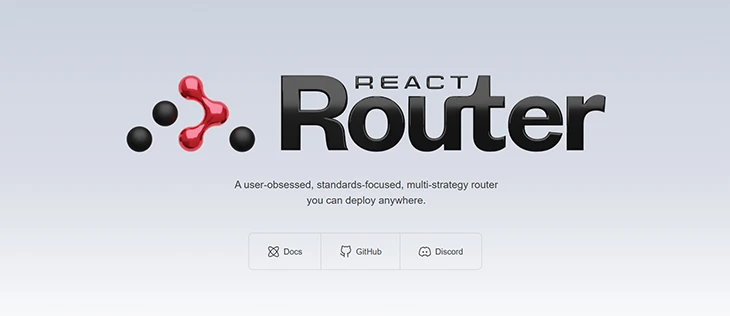
Another one of the best React frameworks is React Router – it is the go-to library for implementing dynamic routing in React applications. Furthermore, it provides tools to define and manage routes that allow developers to seamlessly navigate between different views or pages in single-page applications.
In addition to that, the top features of React Router include nested routing, lazy loading, and route guards that make it a highly flexible and efficient framework for web development. It uses a declarative approach that simplifies complex routing structures, ensuring better readability and maintainability. Its integration with React state management makes it essential for apps that require dynamic, context-aware navigation and state updates.
8. React Virtualized
There are some projects in which developers have to work with large datasets where one of the main bottlenecks is in speed and performance. So, what React framework would be best to use in this case? React Virtualized framework is the best when it comes to working with large datasets and also working on achieving optimal performance.
What React Virtualized does is it optimize rendering by displaying only the elements visible within the user’s viewport, reducing memory consumption and DOM overhead. It has a suite of components such as grids, lists, and tables, all designed for efficiency.
React Virtualized is an ideal framework for developing enterprise applications that handle thousands of rows of data like dashboards or reporting tools, where responsiveness and speed are critical. Its flexibility and performance improvements make it a popular choice for developers building data-intensive applications.
9. React Toolbox
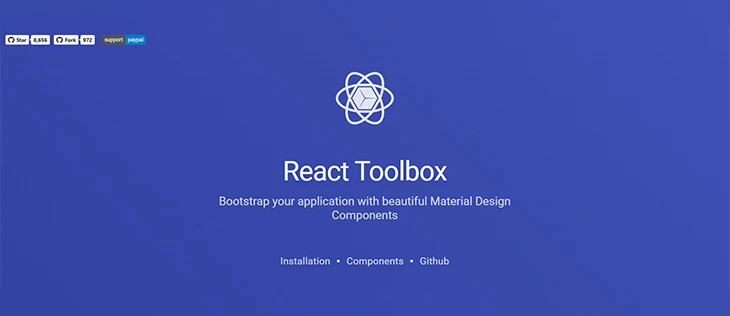
It is a UI library that is built on Google’s Material Desing Principles for adding a sleek and modern aesthetic look for web applications. It is also another framework that has a modular architecture that developers can leverage to integrate the components they need, reducing unnecessary code bloat.
React toolbox provides roust support for custom themes and reusable styles allowing teams to maintain consistency across projects. React Toolbox is best suited for developers who want to develop visually appealing applications that align with Material Design guidelines while enjoying the flexibility of the React ecosystem.
10. Blueprint
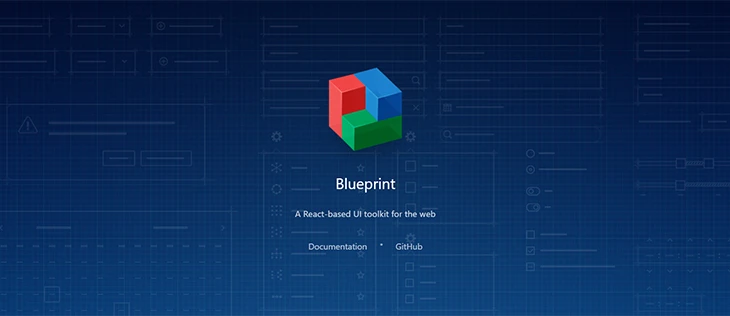
It is another React-based toolkit that is used to design web apps UI that are data-intensive. In Blueprint, the React components are used to be utilized in desktop apps as they are favorable for creating data-sense and complex interfaces.
This framework is mainly used in enterprise application developers such as dashboards, CRM systems, or analytics tools. Developers use its rich UI components like tables, charts, and tree views, all with built-in accessibility and theming support. They can choose bits of code for creating and displaying icons from the available component library, choosing time zones, communicating with times and dates, and much more.
11. Grommet
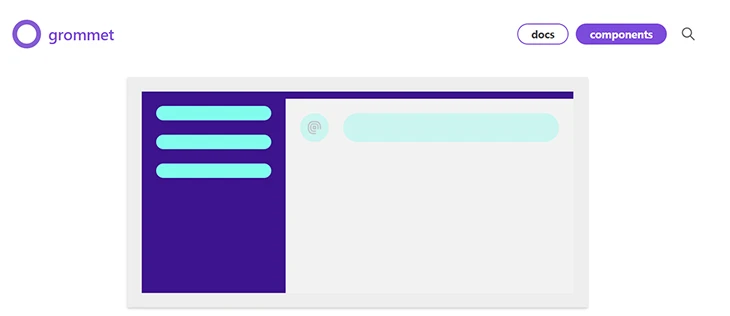
Here we have a very versatile React UI framework i.e., Grommet that focuses on accessibility and responsiveness. It gives developers a rich set of visual components like grids, buttons, and data visualization tools, all designed to adapt seamlessly to various screen sizes.
If we talk about its theming features and capabilities, it allows developers to customize almost every aspect of their web application so that those elements align with brand guidelines. The Grommet framework is ideal for developers who need a flexible, mobile-first approach without compromising on design quality or usability.
12. Evergreen UI
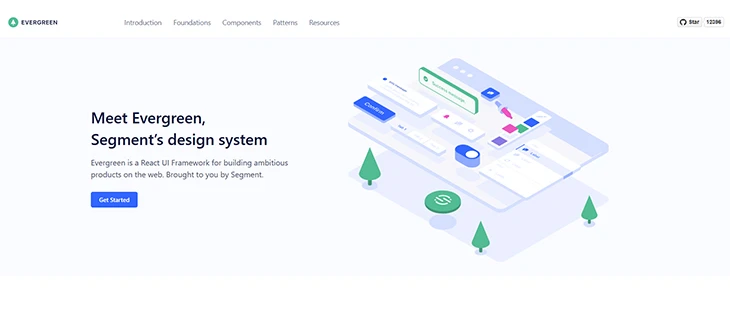
Evergreen UI is one of the popular React frameworks that is best tailored for ambitious web applications. It offers a wide array of ready-to-use components that create next-level user interfaces. With default styles and design aesthetics, developers can create professional-grade interfaces.
Its top features include theming and component flexibility that is perfect to use for applications that demand consistent design and smooth user experiences. It’s particularly well-suited for startups and teams seeking to deliver high-quality applications without extensive design resources.
13. Mantine
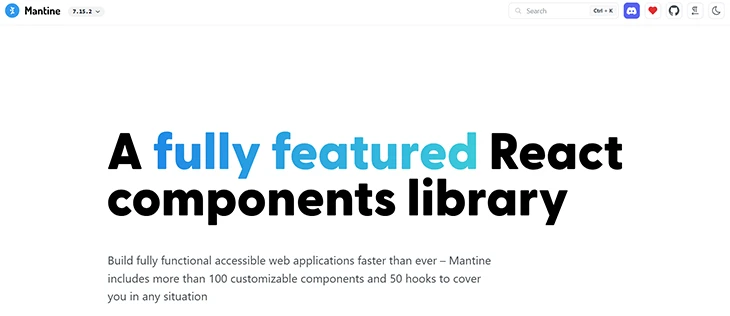
Mantine is a popular framework for React.js we development. It is a comprehensive React component library that provides high-quality components and helps accelerate development. When using Mantine, you will see a wide range of ready-to-use, customizable components such as buttons, modals, and dropdowns, all styled with an intuitive design system.
It also supports theming, dark mode, and server-side rendering (SSR) for better performance. Matine – React framework- is a perfect choice for developers who want flexibility in their app’s appearance and functionality, enabling faster prototyping and streamlined UI development.
14. React Suite
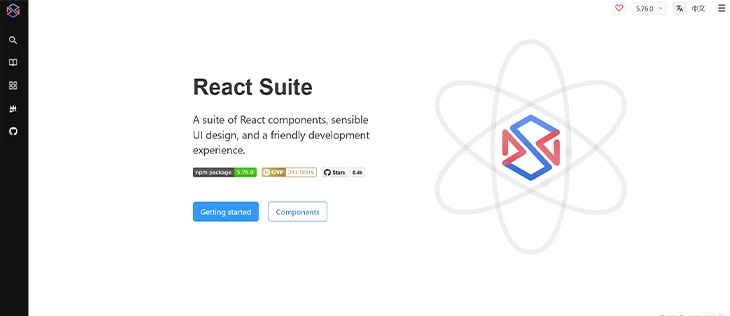
It is a UI toolkit that is best for enterprise-grade applications developed with React. It has a wide collection of well-documented and highly customizable components that give a premium look and feel to your web app solution by catering to complex and data-heavy applications.
Developers find various visual components such as controls to navigation elements, making it easy to create intuitive and user-friendly interfaces. These components include everything from React Suite’s modular approach and integration with TypeScript allow developers to implement sophisticated UIs with a focus on scalability and accessibility.
Who is it ideal for? React Suite is ideal for building business applications with a professional, clean design.
15. Onsen UI
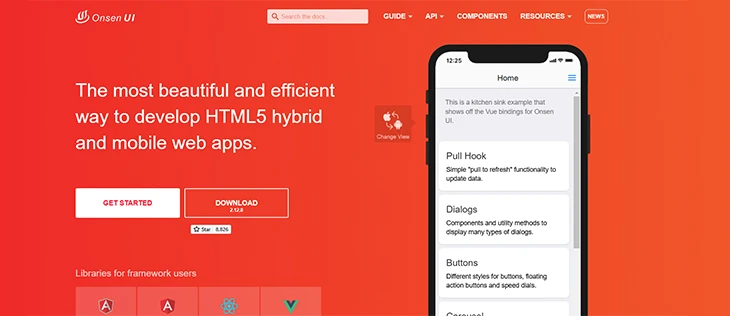
It is a React-based framework to develop mobile-first web applications that feel native on both operating systems i.e., iOS and Android. The main purpose of Onsen UI is to provide not only visually stunning UI components for mobile apps but also top-notch performance.
Onsen UI supports advanced mobile features like swipe gestures, infinite scrolling, and transitions at are aimed to improve user experience across mobile devices.
Another top feature of Onsen UI is its easy-to-integrate ability with React which offers a large library of pre-designed components, making it ideal for developers aiming to create seamless, mobile-optimized applications that run smoothly across various devices.
16. Prime React

It has over 70 components that include data tables, charts, form controls, and calendars make it a top choice for enterprise applications and complex web projects. Prime React is a UI library packed with a wide array of visual components that are perfect for building rich and interactive interfaces.
The best thing about Prime React? It is fully customizable and allows developers to adjust components according to their needs. Developers can easily integrate Prime React with various tools, including form validation and data handling, making it a great choice for building scalable web applications with rich features. Its seamless integration with React and accessibility support enable developers to create beautiful and functional UIs that perform well across all platforms and OS.
17. Gatsby
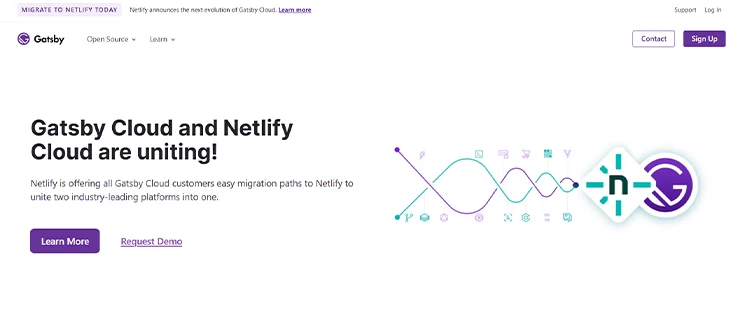
It is a React-based static site generator that developers can use to create fast and SEO-friendly websites and application solutions. During the build process, developers can use pre-building static pages that ensure fast load times, making it perfect for high-performance websites, blogs, and e-commerce platforms.
Speaking about integrations of Gatsby, it can easily integrate analytics, search, and other third-party services easily. It’s particularly useful for projects that require optimized performance, excellent SEO, and the ability to scale efficiently.
18. React Fabric
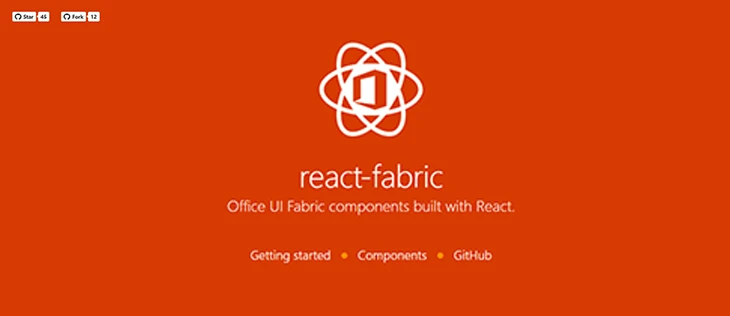
Another of the top front-end frameworks for React is React Fabric. It is a React implementation of the Fluent UI design system by Microsoft. It has a set of UI components that follow, or you can say, adhere to the Fluent Design System, which is used across Microsoft products, including Office.
The visual components of React Fabric focus on accessibility; therefore, it ensures that applications and websites are usable by people with disabilities. It has a highly customizable library and offers seamless integration with React, making it a great choice for developers looking to build enterprise-level applications with a polished, professional UI.
19. React Motion
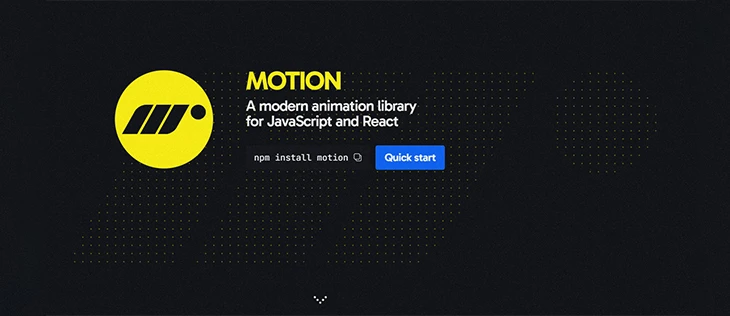
As the name suggests, it is an animation library that simplifies the process of creating natural and fluid animations in React (hence the most interactive websites are developed on React). By the use of spring physics, it enables developers to create animations that mimic real-world movements so that they appear to be more organic. Isn’t it just wonderful?
React Motion library integrates easily with various React components so that developers can easily animate state changes and UI interactions. By using this framework, developers can work on complex animations like page transitions, hover effects, and interactive elements with minimal effort. It’s ideal for adding motion to your application, enhancing user engagement and making the interface feel more dynamic and responsive.
20. React DnD
It is a flexible drag-and-drop library that is specifically built for React. By using React DnD, developers can implement advanced features while maintaining the React declarative approach.
You can create complex user interfaces like Kanban boards, file uploaders, or custom data reordering systems. It provides a highly customizable API, enabling seamless integration with existing components. The library supports accessibility and allows for precise control over drag sources, drop targets, and interactions.
21. React Intl
It is a robust library to manage internalization (i18n) in React applications as it simplifies the process of formatting dates, numbers, and strings for different locales, ensuring your app is accessible to global audiences.
React Intl, just like React, has a declarative approach so that developers can handle translations and locale-specific formatting without complex logic. Its integration with the ECMAScript Internationalization API ensures accurate formatting across browsers, making it ideal for multi-language apps with diverse user bases.
22. React Desktop
Another one of the best React libraries you can name is React Desktop which focuses on creating desktop-style applications using React. These applications offer native-like designs for macOS and Windows. It has pre-designed components like taskbars, window controls, and menus that make it easier to build desktop UIs.
It has a very lightweight structure which enhances performance while its platform-specific design ensures that apps feel familiar and intuitive to users. Whether you’re building an Electron app or a standalone desktop solution, this library delivers a seamless development experience.
23. Semantic UI React
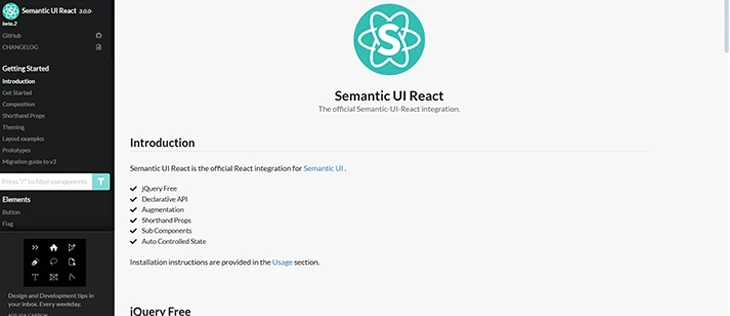
It is one of the top React integrations for the popular Semantic UI framework that provides a set of pre-built customizable components that follow Semantic UI’s clean, human-readable class-based conventions. These components are fully compatible with React and allow developers to build responsive, modern UIs efficiently.
If we talk about its key features, then some of them include a rich library of React components like buttons, modals, forms, and more. In addition to that, developers also get key benefits like high customization, no reliance on jQuery, and intuitive class names.
24. React Bootstrap
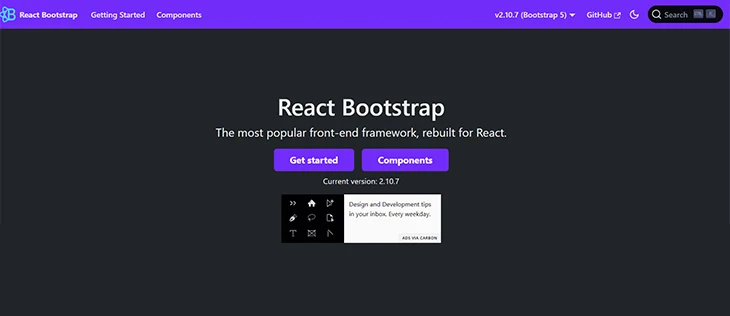
It is a library that offers pre-styled and responsive components built using React and Strap. By using React Bootstrap, developers can use its elements as React components, simplifying integration and customization in React projects. While it enhances UI development, it is not a framework but rather a tool for styling and component-based design.
25. Create React App (CRA)
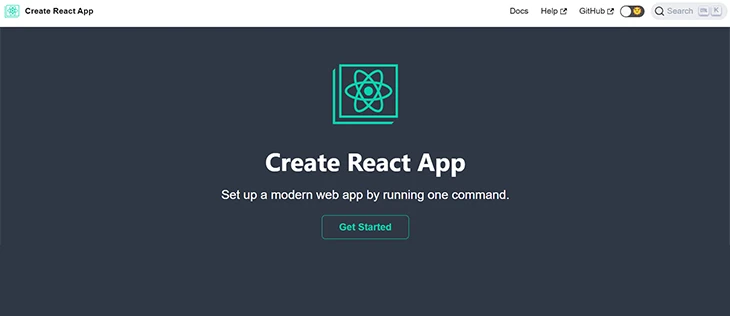
Well, it is more of a tool and less of a framework that helps React developers to set up a project without any configuration. It provides a pre-configured environment for building single-page React applications, and handling setup tasks like Babel, Webpack, and other development dependencies. It’s ideal for beginners and simplifies the process of starting a new React project.
Conclusion
React offers a number of frameworks that equip developers with a tool, reusable components, and much more for creating modern web apps. The best React frameworks list does not end here as there are a lot more. However, to choose the right framework for React, you must consider client requirements and the project’s scope.
Devace Technologies with React Developers
Create modern, high-performing, scalable web applications with React frameworks that provide an unmatched experience. We provide skilled developers with 10+ years of hands-on experience that create fully customized web apps that meet modern trends.
Hire React developers for your chosen framework and take your web development project to the next level – whether it is for a SMB, or you need an enterprise-level app.
Frequently Asked Questions
Is React a framework or library?
React is a JavaScript library and it is not a framework. Developers use React to develop modern, interactive, and dynamic user interfaces, especially for single-page applications. It manages the view layers and can be easily integrated with other frameworks and libraries for high customization.
Is React.js a UI framework?
It is a React library that developers can combine with other frameworks like Material-UI, Ant Design, or Chakra UI to create responsive and aesthetic user interfaces.
Which frameworks use React?
Next.js, Gatsby, and Create React App utilize React as their foundation or core for developing web and mobile apps. They enhance the features like server-side rendering, static site generation, and build tools.
Which backend is best for React?
React works easily with a wide range of backends but popular choices are Node.js with Express, Django, Flask, and Spring Boot. It is better to discuss client requirements and know their preferred tech stack.
What UI framework to use with React?
Material-UI, Ant Design, Chakra UI, Tailwind CSS, and Bootstrap are the best of the best UI frameworks for React developers. Again, it comes to client requirements, preferences, and the overall scope of the project.
